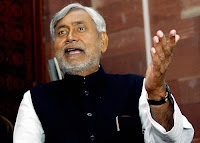The Holy Grail of Tennis
Wimbledon is just another tournament,” said a friend, as we debated the best sporting events of the year. Just another tournament? Really?
The game at the Championships is not what it used to be, there’s no question about it; and the authorities at SW19 have made some dramatic changes in the past few years. In the late Eighties and Nineties, the Wimbledon game was dominated by serve and volley. Baseliners weren’t thought to have a shot at victory – barring the random win by Agassi in 1992. A big serve and a decent game were what you needed to be a contender. It was in complete contrast to the games on the clay courts of the French Open, which concludes just two weeks prior to Wimbledon. At the French, the sluggers from the baseline continued to win titles, then struggled in England a fortnight later.
The complaints started in the late Nineties and early Noughties. There were very few rallies. Players like Ivaniševic would bang out 200 aces in the tournament, keeping average points on his serve less than three seconds. There was a beauty to the serve-and-volley game that only a few appreciated. The dramatic passing shots, the drop volleys, the delicate touches that contrasted the hard serves were often sublime to watch. Alas, the public wanted rallies and longer points.
When changes to the speed and weight of the ball were suggested, Ivaniševic reportedly said, jokingly, that even if they put water in the balls, he would still serve aces. That was not to be. Two things happened: Wimbledon slowed down the grass, and technology improved, leading to better racquets and guts. Tennis, and therefore Wimbledon, became a new game.
We began to see long rallies from the baseline, almost no serve-and-volley play and, when someone approached the net, they were instantly passed. And therein laymy friend’s point. What now differentiatesWimbledon from every other tournament? Sure, the surface is different, but the gameis the same.
But that’s where he’s mistaken. It’s Wimbledon. And it’s more than just a competition. It will always be Wimbledon. Steeped in tradition and honour, it is the oldest tennis tournament in the world, and it is glorious: the suits the umpires wear, the references to female players as Miss or Mrs, the presence of royalty, the acknowledgement of the royal box that every player must make, the strawberries and cream...
And then there’s the game. Ask a tennis fan from any generation to recall the greatest matches he’s watched, and most likely he’ll name a match at Wimbledon. Borg-McEnroe, Navratilova-Evert, Becker-Edberg, Sampras-Agassi and, of course, Federer-Nadal. All these rivalries have peaked on Centre Court, and most tennis fans can remember individual points, and even particular shots, that their favourite players hit.
Who can forget Agassi hugging the golden cup in 1992 like it was his first-born, or Jana Navotná crying, actually crying, on the Duchess’ shoulder after a brutal loss? Or Ivaniševic winning it all as a wild-card entry, and Federer’s down-the-line backhand when he was down Championship point. We remember these moments only because they happened at Wimbledon, and that will never change.
It’s the kingdom of legends. People don’t always remember that Borg won six French Opens, but no one forgets he won five Wimbledons in a row. Sergi Bruguera won two French Open titles, yet you are more likely to remember Andy Roddick’s performances in Wimbledon finals, despite Roddick losing all three. Performances at Wimbledon are where it counts.
Sure, the game has changed at SW19, but despite that the tournament has managed to distinguish itself from every other one, very much like the Masters in golf – that green jacket remains the most sought-after prize in the game. As does the Wimbledon’s golden trophy in tennis.
If you asked Ivan Lendl, who has won eight Grand Slam titles but none at Wimbledon, there’s no doubt he’d give up a few of those just to have one victory at the Mecca of tennis. In 1988, after Becker lost to Edberg, he asked, during the prize-distribution ceremony, if he could just touch the trophy, despite having won it in 1985 and 1986. Edberg obliged. I can’t think of any other trophy that creates such desire.
As players leave the locker room and make their way on to the hallowed turf of Centre Court, they pass by an engraving of a line from Rudyard Kipling’s “If”: “If you can meet with triumph and disaster/And treat those two imposters just the same.” It appears over the players’ entrance.
Not one of the best sporting events of the year? Please. It’s Wimbledon
The game at the Championships is not what it used to be, there’s no question about it; and the authorities at SW19 have made some dramatic changes in the past few years. In the late Eighties and Nineties, the Wimbledon game was dominated by serve and volley. Baseliners weren’t thought to have a shot at victory – barring the random win by Agassi in 1992. A big serve and a decent game were what you needed to be a contender. It was in complete contrast to the games on the clay courts of the French Open, which concludes just two weeks prior to Wimbledon. At the French, the sluggers from the baseline continued to win titles, then struggled in England a fortnight later.
The complaints started in the late Nineties and early Noughties. There were very few rallies. Players like Ivaniševic would bang out 200 aces in the tournament, keeping average points on his serve less than three seconds. There was a beauty to the serve-and-volley game that only a few appreciated. The dramatic passing shots, the drop volleys, the delicate touches that contrasted the hard serves were often sublime to watch. Alas, the public wanted rallies and longer points.
When changes to the speed and weight of the ball were suggested, Ivaniševic reportedly said, jokingly, that even if they put water in the balls, he would still serve aces. That was not to be. Two things happened: Wimbledon slowed down the grass, and technology improved, leading to better racquets and guts. Tennis, and therefore Wimbledon, became a new game.
We began to see long rallies from the baseline, almost no serve-and-volley play and, when someone approached the net, they were instantly passed. And therein laymy friend’s point. What now differentiatesWimbledon from every other tournament? Sure, the surface is different, but the gameis the same.
But that’s where he’s mistaken. It’s Wimbledon. And it’s more than just a competition. It will always be Wimbledon. Steeped in tradition and honour, it is the oldest tennis tournament in the world, and it is glorious: the suits the umpires wear, the references to female players as Miss or Mrs, the presence of royalty, the acknowledgement of the royal box that every player must make, the strawberries and cream...
And then there’s the game. Ask a tennis fan from any generation to recall the greatest matches he’s watched, and most likely he’ll name a match at Wimbledon. Borg-McEnroe, Navratilova-Evert, Becker-Edberg, Sampras-Agassi and, of course, Federer-Nadal. All these rivalries have peaked on Centre Court, and most tennis fans can remember individual points, and even particular shots, that their favourite players hit.
Who can forget Agassi hugging the golden cup in 1992 like it was his first-born, or Jana Navotná crying, actually crying, on the Duchess’ shoulder after a brutal loss? Or Ivaniševic winning it all as a wild-card entry, and Federer’s down-the-line backhand when he was down Championship point. We remember these moments only because they happened at Wimbledon, and that will never change.
It’s the kingdom of legends. People don’t always remember that Borg won six French Opens, but no one forgets he won five Wimbledons in a row. Sergi Bruguera won two French Open titles, yet you are more likely to remember Andy Roddick’s performances in Wimbledon finals, despite Roddick losing all three. Performances at Wimbledon are where it counts.
Sure, the game has changed at SW19, but despite that the tournament has managed to distinguish itself from every other one, very much like the Masters in golf – that green jacket remains the most sought-after prize in the game. As does the Wimbledon’s golden trophy in tennis.
If you asked Ivan Lendl, who has won eight Grand Slam titles but none at Wimbledon, there’s no doubt he’d give up a few of those just to have one victory at the Mecca of tennis. In 1988, after Becker lost to Edberg, he asked, during the prize-distribution ceremony, if he could just touch the trophy, despite having won it in 1985 and 1986. Edberg obliged. I can’t think of any other trophy that creates such desire.
As players leave the locker room and make their way on to the hallowed turf of Centre Court, they pass by an engraving of a line from Rudyard Kipling’s “If”: “If you can meet with triumph and disaster/And treat those two imposters just the same.” It appears over the players’ entrance.
Not one of the best sporting events of the year? Please. It’s Wimbledon
This piece was first published in the June issue of GQ India



Hi Pranav,
ReplyDeleteCan you provide me with your number, i have a client who has a website dedicated to Learn Poker Online. If possible send me your number or e-mail and then we ll take it forward from there.
Regards
Sahil Sareen
#9873 513014
Or, rather, a big serve was all you needed to win Wimbledon by the end of the 90s, or might have had it not been for Pistol Pete keeping the likes of Ivanisevic or Rusedki at bay. It was bad enough that Ivanisevic still won in 2001 but I shudder to think what would have happened but for the formidable presence of Sampras to deny him, not once but twice. I am not going to take up the comment about baseline sluggers. By the way, not just the spectators, even Mark Woodforde once grumbled about Ivanisevic's serve advantage. Thankfully, justice was eventually delivered, albeit too late for Woodforde.
ReplyDeleteIt would be asinine to listen to the likes of Taylor Dent, who were not top 10 material anyway, and go back to 'old school grass'. We would then be looking at a Karlovic v/s Fish final sometime in the future and the days of the Rafa-Fed/Fed-Roddick epics would be gone.
The simplest way to redress the balance once and for all is, if anything, to go back to wooden racquets. Why should light, powerful racquets so strung as to generate plenty of pace have to be used anyway? It was possible to preserve the diversity of tennis in the 70s because it was harder to beat players for sheer pace or use the equipment in any other way to derive any special advantage. But of course, that won't happen. But tennis will evolve. And clay may well become the new grass - Monte Carlo and Barcelona saw spectacular, attacking clay court tennis!